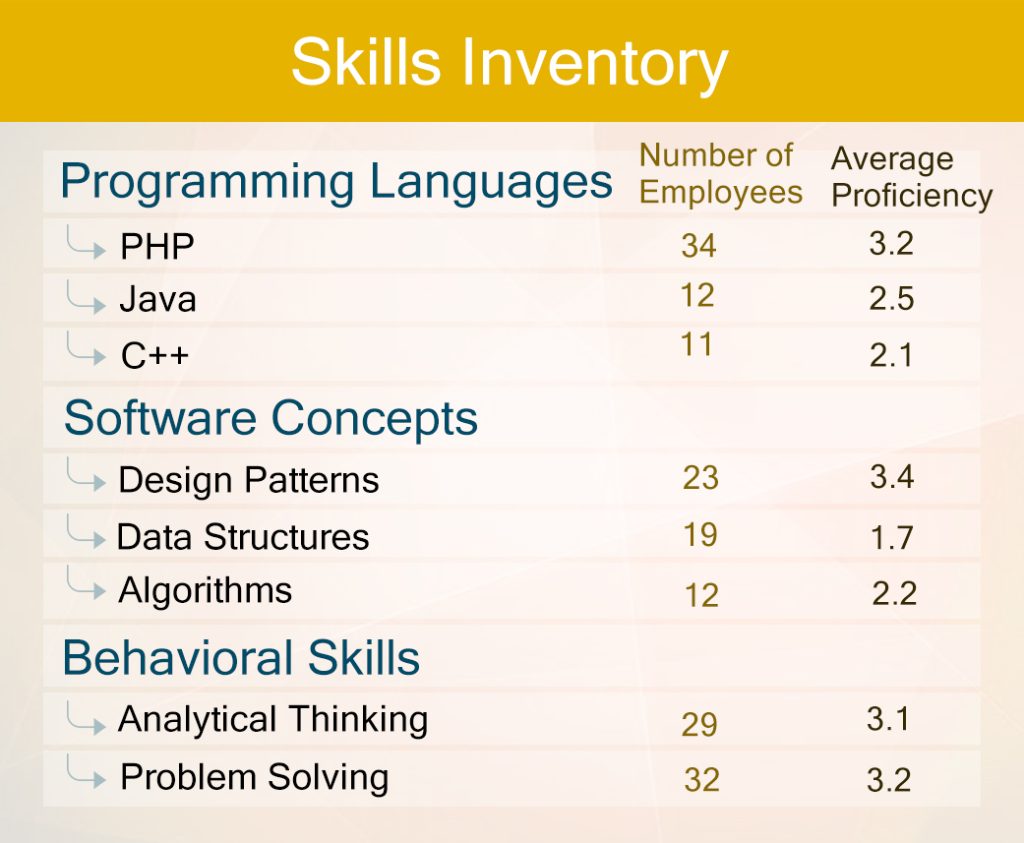How long do your employees remain in your organization? Lately, there has been a buzz around the wave of the “great resignation” across the globe. Many social media users and industry leaders are also using terms like “quiet quitting” to denote this shift in workplace culture as we know it.
Evidently, high employee turnover can severely impact any company. Even if you are regularly hiring new employees, employee retention can help:
- Spend less on employee hiring and training
- Improve employee satisfaction levels
- Leverage existing employee skills
- Build a skilled and dedicated workforce
According to the 2022 Oak report on the “Future of Working,” employees are 21% less likely to leave an organization if they are offered positive learning opportunities. Besides, employee replacement costs around 33% of their salary.
Every organization can have its employee retention strategies – as employees leave for a wide variety of reasons. Some of the best employee retention examples include global companies like Netflix, Ericsson, and DreamWorks Animation.
The question is, how do you add your company to this list?
In this blog, we will discuss 10 effective employee retention strategies that can work for your organization. First things first, let’s understand what an employee retention strategy is.
What Are Employee Retention Strategies – And Why Are They Important?
Simply defined, employee retention strategies are the set of best practices and employee policies – designed to retain them in the organization. Why do companies want to retain their employees for a longer tenure?
According to Skillwork, it is more expensive for organizations to hire recruits – as opposed to retaining the existing workforce. According to recent research studies, the average cost of hiring a new employee in a full-time position is $4,700.
Besides the hiring costs, companies also have to spend more money on training the new hires. Apart from the higher costs, high employee turnover can lead to other negative consequences like:
- Low workforce morale and engagement
- Poor customer service
- High workloads on the existing workforce
- Drop in work efficiency and productivity
On the other hand, effective strategies for employee retention can lead to benefits like:
- Major cost-savings in both hiring and training new talent.
- Improvements in the overall organizational culture and work environment.
- High employee engagement and job satisfaction – leading to high productivity.
- Improved business revenues with high workforce productivity.
At this point, one could ask, what are the best strategies for employee retention? In the following sections, let’s discuss 10 of the best employee retention strategies.
10 Employee Retention Strategies
Here are 10 innovative employee retention strategies that can work for your company:
- Offer a competitive salary package
A suitable employee compensation package is still the best strategy to retain employees. You cannot retain your employees without offering them a competitive salary – in line with their experience and industry standards. At the same time, organizations must have a well-established plan to raise compensation over time.
If your company cannot afford to raise salaries, consider providing other forms of compensation like ESOPs, employee perks, bonuses, and health insurance. Successful companies provide a host of non-monetary benefits like paid meals, gym memberships, health and wellness programs, and retirement plans.
- Choose the right candidate
Hiring a suitable candidate for the job role is a key strategy to retain them in the company. If the hired candidate is not suited for the job, they are most likely to leave the company in a short time. In this process, tools such as a Skills Profiler can help in creating and mapping the candidate’s skills profile to the job profile.
Also, to attract the right candidates, focus on creating a fitting job description that specifies the required job skills, qualifications, and experience level for the job position.
- Enable flexible work
In the post-pandemic world, there is a growing preference for remote or hybrid working among employees. According to a recent Robert Half survey, 56% of employees say remote work has improved their work-life balance and morale. Similarly, a Statista survey found that 89% of organizations have improved employee retention – after introducing flexible work.
If you cannot offer a permanent work-from-home option to your employees, offer alternative working modes like flexible work timing, reduced work days, or partial remote working. At the same time, hiring companies must consider their work demands and requirements carefully before adopting the flexible work model.
- Recognize and reward the best performers
Who doesn’t love to be appreciated for their work? 83.6% of employees feel that work recognition motivates them to succeed at their work. Nearly 78% of employees are likely to be more productive if they are recognized frequently for their work.
As a more effective employee retention strategy, hiring managers must always appreciate and recognize their team members for their work contributions. Additionally, organizations can offer performance bonuses and salary hikes for their top performers.
Other workplace activities like birthday celebrations or work anniversaries can also improve employee morale, thus encouraging them to stay in the company.
- Maintain work-life balance
A healthy work-life balance is known to reduce employee turnover by 25% and healthcare costs by 50%. Employee burnout due to excessive workload is a major contributor to employee turnover. More employees are citing poor work-life balance as the reason for moving to new jobs or seeking new opportunities.
Organizations can achieve work-life balance with the following initiatives:
- Remote or hybrid working facility
- Childcare assistance
- Proper vacation time
- Paid leaves
- Focus on mental health
Additionally, companies must respect employees’ time away from work – where they don’t need to check their emails or answer business calls.
- Invest in employee training and development
Employees are more loyal when companies invest in training and development programs. Hiring companies with a well-defined training strategy can improve their employee retention by 30-50%. Here’s one more interesting fact: Inadequate employee training accounts for 40% of all employee resignations. Continuous learning and training are valued by 87% of millennials.
For employees, training and development activities help them learn new skills and progress in their careers. For companies, skill development enables them to put skilled workers on demanding projects or tasks.
As skillsets continue to evolve, the Skills Taxonomy tool enables organizations to maintain a comprehensive database of existing skills – and identify the skills gap that can be covered through training and development programs.
- Provide performance feedback
Most reporting managers appraise their team member’s performance just once every year – during the annual appraisal mistake. Unfortunately, this is a mistake. Among the better employee retention strategies, managers must provide year-round performance feedback to team members.
Here are some effective tips for managers:
- Talk to your subordinate through regular one-to-one meetings.
- Seek their feedback and suggestions on how to improve work.
- Provide them with constructive feedback about their performance.
- Help them visualize their future in the organization.
- Talk about how they can advance their careers – along with a realistic plan to achieve their goals.
- Communicate with your employees
An Atlassian survey found that 80% of workers had healthy emotional well-being in a work environment of open communication and mutual respect. Open communication is directly related to “happy” employees and their productivity. Healthy workplace communication improves organizational trust and transparency. In this open environment, employees feel “safe” to voice their opinions and suggestions.
Open communication also builds the organizational culture and trust among middle and upper management. This culture enables employees to foster emotions of job satisfaction and personal value – thus indirectly contributing to employee retention.
- Emphasize teamwork
Employees are more likely to stay when they feel connected to the company and other team members. One of the best strategies for employee retention is to focus on building professional work relationships and team spirit. Organizations can achieve this through various team-building activities, fun events, and outings. For example, an annual sports event for the entire company is a great way to build a strong team or organization.
Similarly, within teams, you can foster a culture of teamwork by:
- Encouraging all team members to contribute their suggestions and feedback.
- Empowering them to make work-related decisions.
- Adjusting teamwork to individual working styles and preferences.
- Conduct effective exit interviews
Even with the best employee retention strategies, companies cannot eliminate employee attrition. Most employees will decide to move on to another career or job opportunity. An efficient employee offboarding process that includes exit interviews can help organizations learn why employees leave them.
A “friendly” exit interview can go a long way in maintaining a good relationship with your ex-employees. It could also prompt them to return to your company in the future. Besides the offboarding process, organizations must regularly communicate with their existing employees about why they have chosen to remain.
Conclusion
In this blog, we have discussed 10 of the most innovative employee retention strategies that can work for any company. As part of this strategy, organizations need an efficient skills inventory and development program to hone their existing skills.
This is where the skills analytics platform IYS can make a difference – with skill-based offerings in skills taxonomy, profiling, and analytics. For instance, the IYS Skills Profiler helps map your employee skills with your job profiles and is backed by our exhaustive Skills Taxonomy database of skills.
Our range of offerings can help boost employee learning and development programs, thus enhancing employee retention.
We can be part of your employee retention strategy. To learn more, drop us a message at connect@itsyourskills.com.





